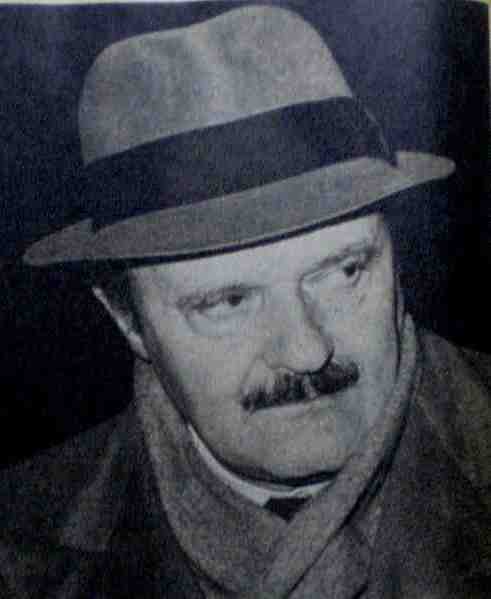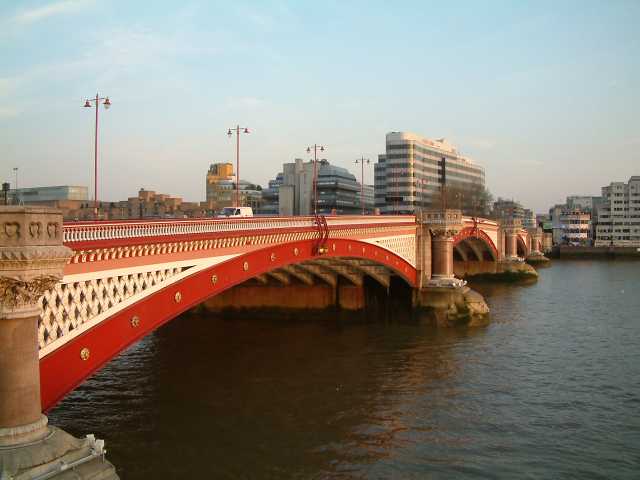The Mafia, the Vatican and a secret Masonic society have all been implicated in the murder of ‘God’s Banker’ Roberto Calvi.
A passerby on his way to work spotted the 62 year-old financier hanging from London’s Blackfriars Bridge at 7.30am on Friday 18 June, 1982.
Calvi was suspended from scaffolding above the Thames, an orange rope tied in a lover’s knot around his neck. Building bricks had been placed in his pockets to weigh him down along with around £7,500 in cash.
At first the City of London police believed his death was a suicide.
Three years earlier Calvi, the Chairman of the Catholic Banco Ambrosiano in Milan, had tried to kill himself while in prison awaiting trial for violating Italy’s currency laws.
Calvi was given a suspended sentence in 1981 and kept his position as Chairman but a year later an £800m black hole was found in the accounts.
On 5 June 1982, Calvi wrote a letter to Pope John Paul II asking him to intervene to prevent ‘a catastrophe of unimaginable proportions in which the Church will suffer the gravest damage.’
Four days later he deserted his post and his apartment in Rome and fled to Venice. After shaving off his moustache he took a private plane to London.
The inquest in July 1982 ruled it was suicide but the decision was overturned after the Calvi family employed George Carman QC to argue their case. In July 1983 an open verdict was returned.
Since that date investigations have revealed evidence that Mr Calvi was assassinated to prevent him implicating major figures in Italy in the collapse of Banco Ambrosiano.
A year before his death, Calvi’s name had been discovered on a list of members of a Masonic Lodge known as Propaganda Due or P2, alongside two Cabinet ministers, 48 MPs and the heads of all three intelligence agencies.
Another name for P2 was the ‘frati neri’ or ‘black friars’.
The ‘grand master’ of P2, Licio Gelli, was later jailed for the Banco Ambrosiano fraud, which also affected its main shareholders, the Vatican Bank.
In 1991 an informer claimed that Calvi was killed on the orders of Licio Gelli and Sicilian mafia boss Giuseppe Calo, partly as punishment for embezzling money owed to P2 and the mafia.
Seven years later, during a reinvestigation by Italian police, Calvi’s body was exhumed. This time it was concluded that he had in fact been murdered. Injuries to his neck were inconsistent with hanging and there was no rust or paint on his shoes to back up the theory he had climbed onto the bridge scaffolding to hang himself.
Although Gelli did not stand trial, prosecutors brought charges against Giuseppe Calo, gangsters Flavio Carboni and Ernesto Diotallevi, Carboni’s ex-girlfriend Manuela Kleinszig and Calvi’s former driver and bodyguard Silvano Vittor.
The trial in Rome began on October 5, 2005, but after 20 months of evidence all five were cleared of murder after the judge decided there was insufficient evidence.
Despite the acquittals, it has now been accepted by City of London police that Calvi was murdered. But by whom?
___________________
Sources and further information:
On This Day: a BBC video feature on the murder.
Article in the Evening Standard in 2003 on the fight for justice by Calvi’s son.
Wikipedia articles on Roberto Calvi, Licio Gelli and Giuseppe Calo.
Feature film based on the Calvi murder by director Giuseppe Ferrara – I Banchieri di Dio – Il Caso Calvi (2001)
Cornwell, Rupert (1983). God’s Banker: The Life and Death of Roberto Calvi

